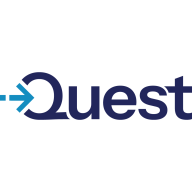

SharePlex and Azure Data Factory are competing in data integration and migration. SharePlex leads with streamlined pricing and robust support, while Azure Data Factory offers superior features and flexibility.
Features: SharePlex excels with high-speed data replication, support for various databases, and strong data integrity tools. Azure Data Factory is distinguished by its data orchestration, broad integration support, and capability for big data processing.
Room for Improvement: SharePlex could enhance its data transformation capabilities and add more cloud service integrations. User interface improvements would also benefit SharePlex. Azure Data Factory could improve by offering more straightforward pricing, enhanced customer support, and improved offline capabilities.
Ease of Deployment and Customer Service: SharePlex offers a simple deployment model with reliable customer service. Azure Data Factory utilizes a cloud-based approach enhancing scalability and integration, though it may require more support during implementation.
Pricing and ROI: SharePlex provides an economic setup prioritizing quick ROI. Azure Data Factory, despite higher costs, delivers value through extensive features that justify the investment in the long term.
| Product | Market Share (%) |
|---|---|
| Azure Data Factory | 5.2% |
| SharePlex | 0.8% |
| Other | 94.0% |

| Company Size | Count |
|---|---|
| Small Business | 31 |
| Midsize Enterprise | 19 |
| Large Enterprise | 55 |
Azure Data Factory efficiently manages and integrates data from various sources, enabling seamless movement and transformation across platforms. Its valuable features include seamless integration with Azure services, handling large data volumes, flexible transformation, user-friendly interface, extensive connectors, and scalability. Users have experienced improved team performance, workflow simplification, enhanced collaboration, streamlined processes, and boosted productivity.
SharePlex delivers robust database replication and migration capabilities, emphasizing performance, synchronization, and data integrity management. Supporting high availability and real-time data syncing, it serves organizations handling vast transaction volumes, especially in IoT data processing.
SharePlex offers reliable data transfer and efficient multi-target replication. Its features like Compare and Repair utilities assist in maintaining data consistency. With PEP fostering scalability for large transactions, it caters to businesses aiming to cut down migration windows and minimize outages. Users employ SharePlex in real-time syncing and failover scenarios across data centers, crucial for handling extensive transaction data during migrations or upgrades.
What are SharePlex's key features?Organizations in sectors like finance and telecommunications implement SharePlex to maintain uninterrupted operations and ensure quick recovery times. By facilitating database migrations to cloud platforms like AWS, they achieve reduced downtime and enhanced operational efficiency, catering to the rigorous demands of data-driven industries.
We monitor all Data Integration reviews to prevent fraudulent reviews and keep review quality high. We do not post reviews by company employees or direct competitors. We validate each review for authenticity via cross-reference with LinkedIn, and personal follow-up with the reviewer when necessary.